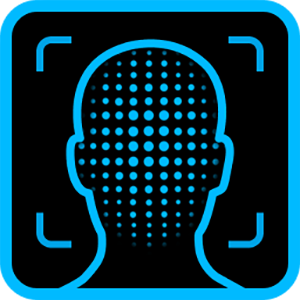AI Facial Recognition Drives Six Compelling Smart Medical and Healthcare Applications
In recent years, we have seen an explosive growth in the application of artificial intelligence (AI). AI applications can now be found in many areas of daily life, and a handful of industries are also warming up to the use of machine intelligence technology. Notably, the use of AI in medical and healthcare applications has been an emerging trend, satisfying the needs of medical staff and personnel and making their long days easier and more efficient.
An Introduction to AI-Powered Healthcare
The World Health Organization (WHO) defines smart healthcare (eHealth) as the use of information and communication technology (ICT) in support of work in fields related to medicine and health. In short, smart healthcare is the application of AI technology in healthcare.
A report study released by the 2020 Medical Care Industry Outlook by Deloitte analysts highlights various technologies that need to be continuously developed to drive innovation in the medical industry, namely focusing on the "ABCDEF" key developments: AI, Blockchain, Cloud, Big Data, Edge Computing, and 5G (Fifth generation mobile connectivity). Reports like these clearly show that AI has played an important part in medical technology developments and are projected to continue being an important part in the future of medicine.
Five Advantages of Using AI Technology in Medical Facilities
Many medical institutions domestically and abroad are currently facing labor shortages. Because of these shortages, hospital staff and medical personnel are expected to perform more tasks than normal and are still expected to deal with often lengthy patient registrations and waiting procedures.
Fortunately, smart healthcare can help lighten the load placed on medical staff. The following are five major benefits of using AI technology in medical facilities that could be incorporated in hospitals and clinics today:
- Enhancing Security and Augmenting Access Control: From waiting rooms, cafeterias, patient floors, ICU rooms, sterile zones, and administrative offices, to medical equipment and medicine cabinets, facial recognition can ensure secure access to sensitive areas or supplies for only those with proper credentials, during permitted times. When used for patient tracking, facial recognition eliminates the potential for lost, stolen, or removed patient ID wrist bands.
- Providing an optimized service process: Integrating self-service health information stations with facial recognition check-in, or implementing facial recognition check-in attendance systems, can shorten patient on boarding, visitor sign ins and overall wait times while optimizing service quality.
- Simplifying administrative procedures: By using smart robots and health information stations, both patients and caregivers can spend less time on filling out paperwork and completing administrative tasks and move on to other more pressing issues.
- Increasing operational efficiency: With the help of AI technology and supporting digital technology, medical institutions can develop data management and control centers to increase operational efficiency. A mix of big data analysis, automated processes, and robots can be leveraged to complete tasks quicker.
- Improving doctor-patient relationships: The rapid development of the Internet of Things (IoT), wearable devices, remote monitoring, and AI warning systems will ease the stresses of medical staff, improving the relationship and experiences patients have with their doctors and nurses. In addition, a record of which members of the patient care team interacted with which patients at what times aids in patient care consistency.
Source: McKinsey & Company
Facial recognition is one of the most mature technologies in the current world of AI. A wide range of applications have been developed thanks to the use of facial recognition, as it is one of the fastest and most reliable uses of biometric technology. Beyond the obvious personal face-payment and face-unlocking processes, medical institutions can effectively apply facial recognition systems to the following six fields:
- Premises Access Control
- Patient / Visitor Entry and Exit Records
- Employee Time Clock
- Smart Medicine Cabinets to Improve Medication Safety
- Instant Patient Health Monitoring and Diagnosis
- Medical Care Providing Smart Robots
Six Key Applications of AI Facial Recognition in Medical and Healthcare

1.Premises Access Control
Premises access control applications are a mix of AI access control and security management technologies. These applications allow for patients and staff to have access to some parts of medical facilities but not others. For example, the general public is allowed to enter clinics and hospital reception areas, but are forbidden entrance to diagnosis and treatment areas, radiology facilities, biological laboratories, intensive care units, and so on. And these controls aren't just for patients; they can also be used to prevent non-authorized medical personnel from arbitrarily entering specific areas. This helps ensure that the medical facilities are secure and that individuals are not accessing unauthorized rooms and stations.
Luckily, FaceMe Security is a one-stop facial recognition solution designed for business premises access control and security management. Its recognition rate ranks among the best in the US government's NIST FRVT 1:1 and 1:N tests. One of the biggest advantages of FaceMe Security is that it can integrate AI-driven facial recognition technology with a wide range of mainstream video management systems (VMS). Compatible VMS are developed and supplied by companies such as AXIS, Genetec, Milestone, NetworkOptix, Vivotek, etc. These systems can provide image analysis and storage using multiple security control hosts, simultaneous multi-channel real-time stream monitoring, and real-time browsing of identified personnel-related information. To more efficiently distinguish between different subjects (such as patients, employees, and visitors), system managers can create different groups with custom attributes when setting up the system. This 'tagging' of personal identification properties is similar to an online search and is a convenient way to implement systems as well as group and analyze data.
FaceMe also offers a Security Video Monitoring & Recording (VMR) add-on, ideal for organizations who do not yet have a VMS. This system allows users to monitor up to nine video streams simultaneously, and supports video recording, search, and playback all at the same time. Videos, new and old, can be searched and analyzed by VMR technology. The add-on can also be used to authorize or deny access to certain zones and even check a person’s temperature and proper mask wearing before allowing facility access.
FaceMe Security provides APIs for connecting with third-party communication systems, including applications such as Slack, U Messenger, etc. This allows security personnel to immediately receive push notifications when a security event occurs, such as when an unauthorized subject tries to forcibly enter a controlled area. Moreover, administrators can create preset warning notices, and plan countermeasures to shorten the response time when such access violation attempts happen.
2.Patient / Visitor Entry and Exit Records
A common registration process at medical facilities is signing in and waiting for one’s name to be called. However, this isn't optimal for administrative efficiency, can increase waiting times and risk of infections, and does nothing to hinder fraudulent identity.
Through the use of CyberLink's FaceMe SDKmedical institutions can integrate facial recognition technology into smart kiosk health information stations, and register their faces (assuming consent has already been gained from patients or their legal guardians). Through systems like these, patients only need to complete a quick check-in via a zero-contact facial recognition kiosk at the time of sign-in. Friends and family who may come to visit a patient can also directly verify their identity through facial recognition, without the need to physically sign in at the reception area or nursing station.
In some situations where there are heightened infection risks, it is necessary to wear masks when entering and leaving certain areas. FaceMe SDK's facial recognition technology has a recognition rate of 98.21% for mask-wearing individuals, and can detect the wearing of masks and their proper fit. It even supports the identification of different types of masks, such as medical masks, N95 masks, and cloth masks.
The FaceMe SDK is a cross-platform facial recognition support engine ideal for users who want a bit more customization. The system works on multiple operating systems (Windows, Linux, Android, iOS) and can run on high-end workstations, personal computers, or on IoT and AIoT devices, but is flexible enough to work with the user’s intended scenario. For example, video consultations between doctors and patients, popularized during the COVID pandemic, can be advanced through facial recognition with 2D/3D biometric anti-spoofing technology used to verify a patient's identity and then issue a prescription.
The FaceMe SDK web interface also allows for easy personnel management, allowing users to quickly add new staff, or remove those who have left the organization. In addition to this, the web interface can also be used for viewing the attendance rate of a specific employee or department through its advanced filtering function. The data can even be used for calculating personnel costs, helping administrators make important financial decisions on how they wish to allocate their staff and resources. FaceMe SDK also has a function for a .CSV export, allowing users to move data into external applications for further processing and analysis when desired, or for creating backups.
3.Employee Time Clock Using Facial Recognition Technology
Due to the recent COVID-19 epidemic, the demand for facial recognition time clocks have only increased, and over recent years, medical institutions have been at the forefront of this demand.
Over the past few years, the Taoyuan Hospital of the Ministry of Health and Welfare adopted an access control screening system combined with FaceMe facial recognition. With the help of these systems, the hospital now uses thermal imagers at its entrance as well as facial recognition compatible 2D/3D cameras to complete forehead temperature screenings, ensuring the health of patients and medical staff. This access control screening system was jointly developed with Tsukuba Medical Electronics, and can even detect the body temperatures of 10 to 30 people in just 0.5 seconds.
4.Smart Medicine Cabinets Improve Medication Safety
In recent years, hospitals have recognized the importance of smart medicine cabinets to ensure the safety and proper dispensing of controlled substances by patients and personnel. By introducing facial recognition technology into medicine cabinets and connecting the cabinets with the hospital time and attendance systems, hospitals limit cabinet access only to staff who have passed identity verification checks and are authorized to use the cabinet at their scheduled time. This AI-infused process is more secure than the traditional employee identification cards, and companies can even incorporate multi-factor authentication through a combination of the traditional ID card and facial recognition software to maximize cabinet security – improving overall patient, personnel, and public safety.
5.Instant Patient Health Monitoring and Diagnosis
Facial recognition can even be used for real-time emotion recognition, and thereby can be used for improving patient monitoring and diagnosis. Some medical institutions have already combined facial recognition and real-time emotion recognition technology to develop a system for identifying the mental state of patients during their care. Naturally, this technology found its first adopters in the field of psychotherapy and will hopefully provide patients with better diagnosis and treatments for mental illnesses in the realm of the healthcare industry.
6.Medical Care Providing Smart Robots
Another advantage of incorporating smart medical care into hospitals is the integration of medical care robots. Smart robots with facial recognition can be used to enhance patient care services, completing tasks that would have previously required human employees. Camera-equipped robots can recognize the identity of the patients, and once recognized, the robot can provide personalized medical services such as reminding patients when to take their medicine(s), medication, recording self-monitoring data like a patient’s blood glucose and blood pressure, or even recognizing a patient's emotions and responding appropriately..
Global Trends in AI Healthcare Development
The combination of AI and healthcare raises infinite possibilities for the future of the medical industry. Many governments are already actively promoting the development of smart medical care, and it is likely that with the increasing popularity of facial recognition, technologies such as FaceMe AI image recognition will spur the use of more innovative smart medical devices and assist medical institutions in establishing more convenient and safer services.








